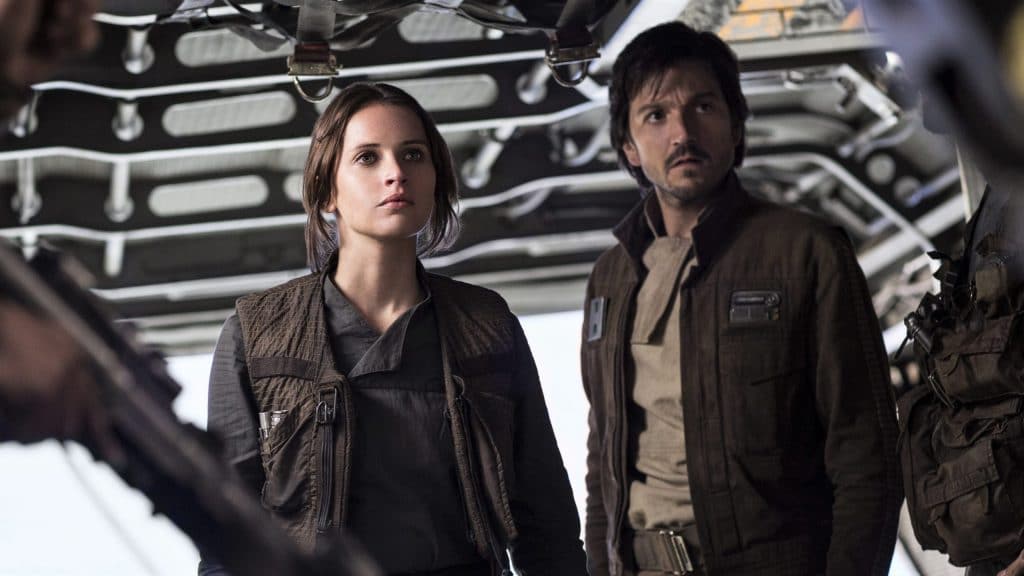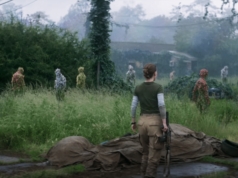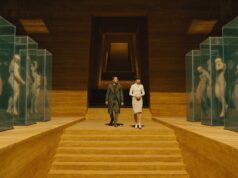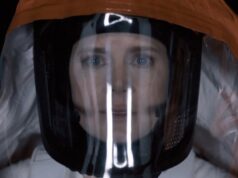Rogue One is a great movie that came out at a perfect moment for this kind of story, when it seems like a lot of people have forgotten what Star Wars is about
Rogue One: A Star Wars Story
Directed by Gareth Edwards. Screenplay by Chris Weitz and Tony Gilroy. Story by John Knoll and Gary Whitta. Based on characters by George Lucas. Starring Felicity Jones, Diego Luna, Donnie Yen, Jiang Wen, Riz Ahmed, Ben Mendelsohn, Mads Mikkelsen, Alan Tudyk, Forest Whitaker, Jimmy Smits, Alistair Petrie, Genevieve O’Reilly and Ben Daniels.
As I watched Rogue One, a spin-off of the Star Wars saga, I couldn’t help but think that it came out at the best moment for this kind of story. The world has witnessed the rise of numerous fascist movements in 2016, and hell, even Donald Trump became president of the United States! I guess it is only natural that a movie would come up this year to remind us of the importance of fighting and resisting oppression (social or political) — something that George Lucas’ saga had done before but the world still doesn’t seem to grasp. And what makes Rogue One so special is that it shows us a battle not fought by Jedis but by normal people, like you and me.
That is a great step considering the audacious way that Star Wars: The Force Awakens already defied gender and racial conventions by having a woman, a black man and a Latino as main heroes. Rogue One goes even farther, centered on a group of rebels formed by a woman (Felicity Jones, the protagonist), a Mexican (Diego Luna), a British Pakistani (Riz Ahmed) and two Asians (Donnie Yen and Jiang Wen). Not worried a bit if this unusual move would push the audience away (that is, idiots who feel outraged by the sight of a female Jedi who doesn’t need to be rescued by a man), the movie is a remarkable example of what representation should be about in an industry dominated by white faces and male heroes.
And this is also coherent with the plot it wants to tell. Written by Chris Weitz and Tony Gilroy from an idea by ILM visual effects supervisor John Knoll, Rogue One is set right before A New Hope (1977), yet it has an independent structure and could easily be watched by anyone who hasn’t seen any other Star Wars movie before. Our heroine is Jyn (Jones), a Rebellion criminal and daughter of Empire scientist Galen Erso (Mads Mikkelsen) who has been forced to help design the Death Star. After being freed from Imperial captivity by the Rebel Alliance (a ploy to use her to track her father down and kill him), Jyn joins Rebel officer Cassian Andor (Luna) and others who will also have a decisive role in stealing the weapon’s schematics.
Following so many different factions involved in the battle, Rogue One doesn’t show things in black and white. The character of Saw Gerrera (Forest Whitaker), for instance, cannot be easily defined as good or bad. He rescued Jyn as a child when Galen was abducted by the Empire and now leads an extremist faction of the Alliance — and like any extremist, he can be cruel, paranoid and dangerous. Even better is seeing how each character is so well developed and follows strong personal motivations: Cassian is a determined man with a secret agenda, Bodhi Rook (Ahmed) is an Imperial pilot who defects and wants to do what is right, Chirrut Îmwe (Yen) is a blind warrior who believes in the Force like a religion, and so on.
But the center of the narrative is Jyn. At first, when asked if she doesn’t mind the sight of the Imperial flag waving overhead, she is resigned to the state of things and gives a revealing answer: “It’s not a problem if you don’t look up.” Later on, however, she starts to evolve from a hopeless conformist into someone who decides to fight for what she believes is right — and hope is precisely what Rogue One is about (“Rebellions are built on hope,” someone says). Also, the movie offers a powerful commentary on how we can see good people do horrible things simply because they are following orders, and I love the moment when Jyn says to a certain character: “Orders? When you know they’re wrong? You might as well be a Stormtrooper.”
Offering new information about the Whills and Kyber crystals (which power lightsabers), Rogue One also has its share of welcome references. Those attentive will recognize the man that Jyn bumps into in Jedha as being the same man who tried (that is, will try) to start a fight with Luke at the cantina in A New Hope, and there are some cameos too. I particularly felt a warm rush of familiarity at the sight of a known face among the rebels, while those dying to see Darth Vader will be happy to know he shows up (don’t worry, this is not a spoiler). He gets to have a big entrance and one of the movie’s best lines, spoken to the ambitious Director of Advanced Weapons Research for the Imperial Military Orson Krennic (Ben Mendelsohn).
And if I mentioned some paragraphs ago that all this came from an idea by ILM visual effects supervisor John Knoll, I guess it is only natural to expect that Rogue One would come up with top-notch special effects — especially since director Gareth Edwards (Monsters, Godzilla) is also a visual effects artist. The CGI design of the planets and alien creatures are great as usual, like the Imperial-occupied moon of Jedha with its giant Jedi statue half-buried in the sand. But even more fascinating is to see that the movie features some awesome digitally inserted characters from the original Star Wars, like Grand Moff Tarkin, who used to be played by Peter Cushing. Despite his death in 1994, Cushing was “resurrected” in CGI and is performed by Guy Henry.
Full of irresistible moments of humor, especially those involving the droid K‑2SO (Alan Tudyk) and Îmwe (my favorite is when someone covers his head even though he is blind), Rogue One also delivers some exciting action, which Edwards knows quite well how to coordinate. And he does an excellent job of keeping everything so incredibly tense and urgent (until the very last scene) even if we know right from the beginning how everything ends.
Starring many talented actors who are not big Hollywood stars, Rogue One is a rebellious movie in itself, and I hope it will help pave the way for a more representative Hollywood. Let’s just see if others will follow the example and take to heart what this movie is saying.





